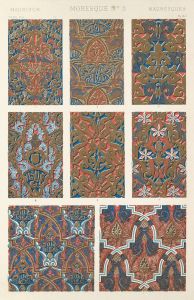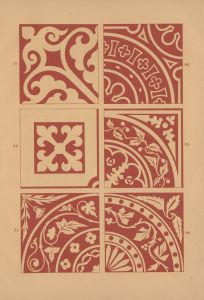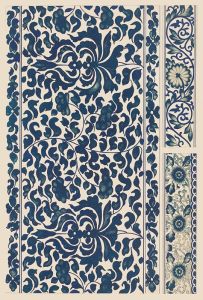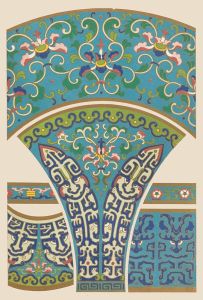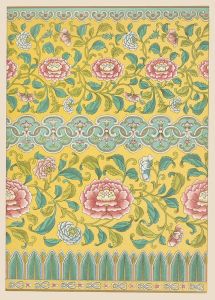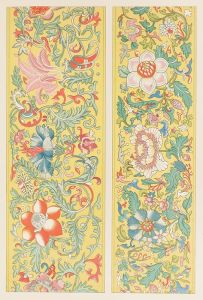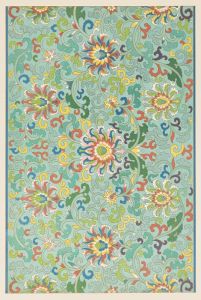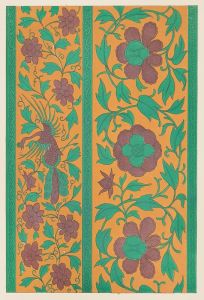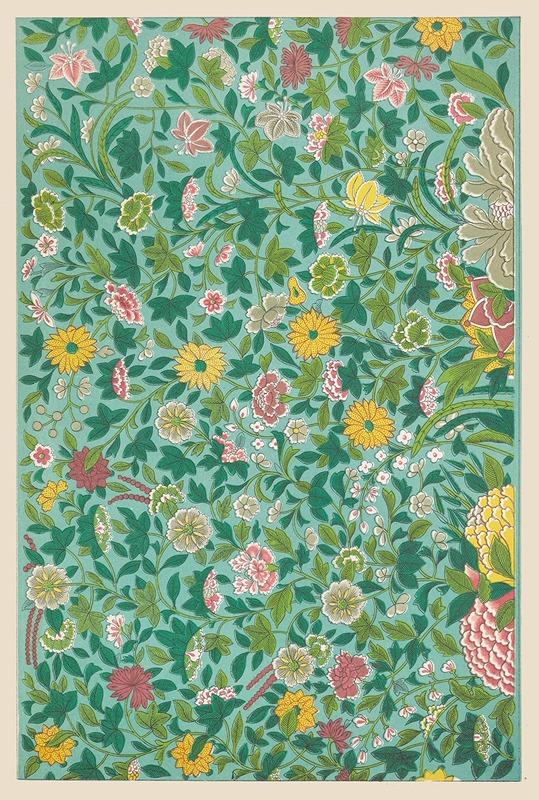
Examples of Chinese ornament, Pl.68
A hand-painted replica of Owen Jones’s masterpiece Examples of Chinese ornament, Pl.68, meticulously crafted by professional artists to capture the true essence of the original. Each piece is created with museum-quality canvas and rare mineral pigments, carefully painted by experienced artists with delicate brushstrokes and rich, layered colors to perfectly recreate the texture of the original artwork. Unlike machine-printed reproductions, this hand-painted version brings the painting to life, infused with the artist’s emotions and skill in every stroke. Whether for personal collection or home decoration, it instantly elevates the artistic atmosphere of any space.
"Examples of Chinese Ornament, Pl. 68" is a plate from the influential design book The Grammar of Ornament, authored by Owen Jones and first published in 1856. Owen Jones (1809–1874) was a British architect and designer known for his contributions to design theory and his efforts to document and promote decorative arts from various cultures around the world. His work aimed to provide inspiration and guidance to designers and artists by showcasing ornamental patterns and motifs from diverse traditions.
Plate 68 specifically focuses on Chinese ornamentation, presenting a selection of decorative motifs inspired by traditional Chinese art and design. The illustrations in this plate are characterized by their intricate patterns, vibrant colors, and symmetrical arrangements, reflecting the aesthetic principles commonly associated with Chinese decorative arts. These designs often incorporate elements such as floral motifs, geometric patterns, and stylized representations of natural forms, which were hallmarks of Chinese artistic traditions.
Jones' The Grammar of Ornament was groundbreaking in its approach, as it systematically categorized and analyzed ornamental styles from various cultures, including Chinese, Indian, Persian, Greek, and others. The book was intended to serve as both a reference and a source of inspiration for designers during the 19th century, a period marked by increasing interest in global art and design due to expanding trade and cultural exchange.
The designs in Plate 68 were not direct reproductions of specific Chinese artworks but rather interpretations and adaptations based on Jones' study of Chinese decorative principles. His work reflects the 19th-century European fascination with "exotic" art forms and the desire to incorporate these influences into contemporary design practices. However, it is important to note that Jones' interpretations were filtered through a Western perspective, and the designs may not fully capture the cultural and historical context of the original Chinese art forms.
The Grammar of Ornament remains a significant historical document in the study of design and decorative arts. It provides valuable insight into how 19th-century designers like Owen Jones engaged with and sought to understand the artistic traditions of other cultures. Plate 68, as part of this larger work, continues to be appreciated for its visual appeal and its role in the dissemination of Chinese ornamental design to a global audience.






